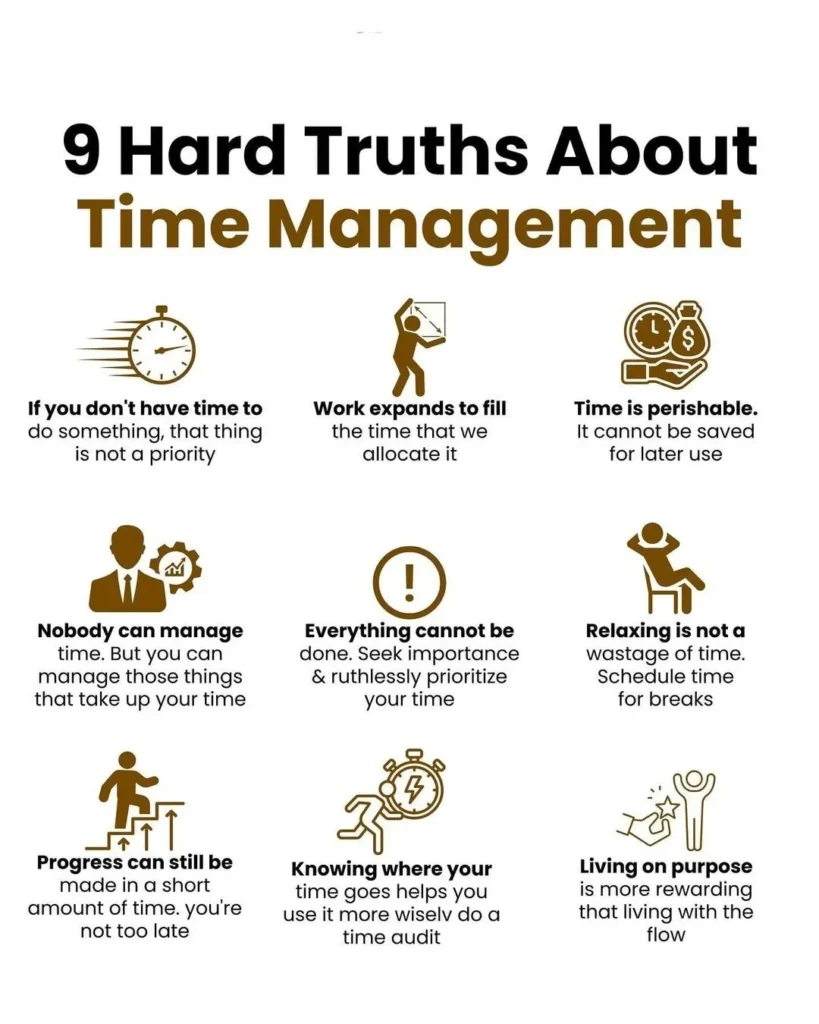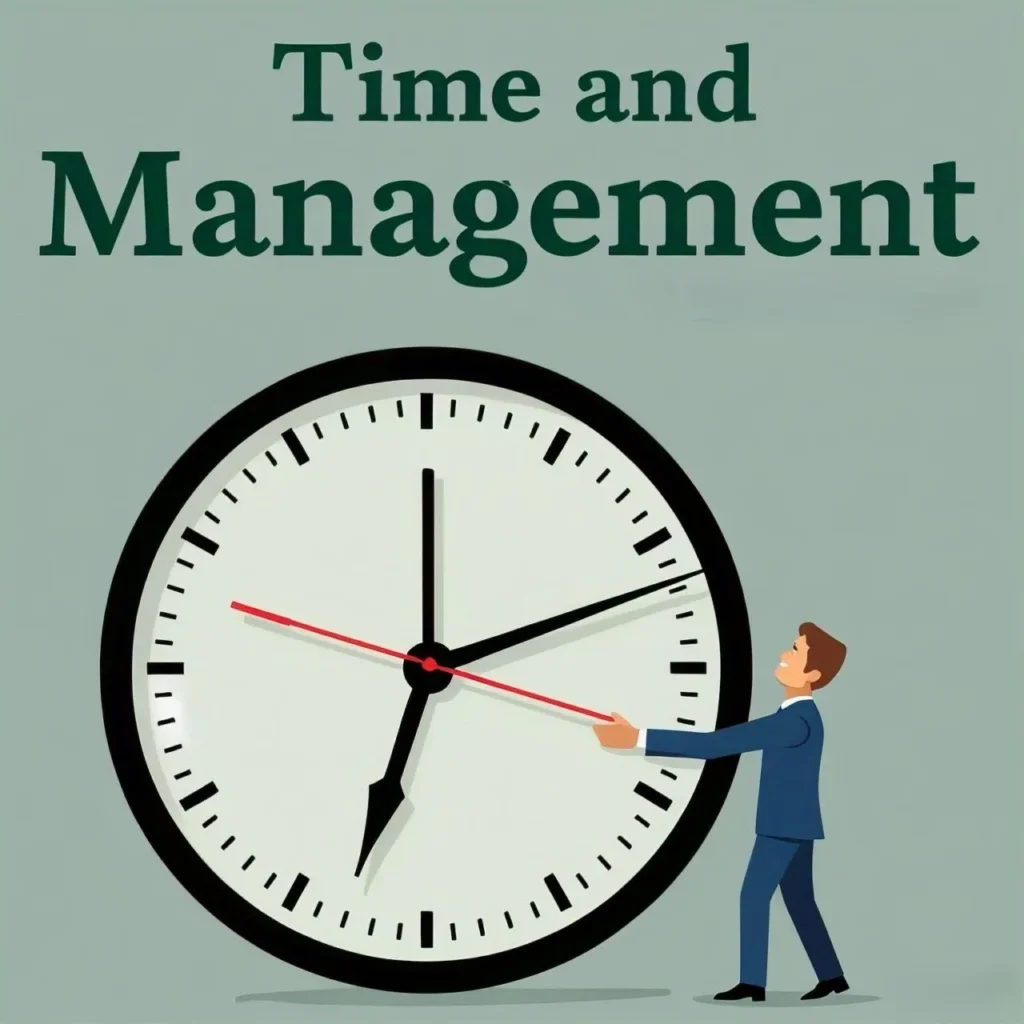In today’s fast-paced world, developing time management theory is important for anyone trying to achieve their goals. Whether it’s a personal goal that I have already achieved like running a race or my personal goal in work immersion such as excelling in a new job, effective time management paves the way to success. We explore 5 proven strategies rooted in time management theory to help you align your daily routine activities with your vision and goals for the future. By including these techniques you can increase time management and academic achievement improve setting goals for 2025 and even embrace inspiring work-life balance quotes to maintain harmony.
Let’s dive into these strategies and see how they can transform your productivity supported by a real-life case study.
How Time Management Drives Goal Achievement
Time management theory is not just about scheduling tasks it’s about creating goals that matter most to fulfill your vision and goals for the future. Poor time management often leads to stress, missed deadlines and unfulfilled dreams whether it’s a personal goal that I have already achieved or my personal goal in work immersion. Studies show that effective time management and academic achievement are closely linked with students who plan their daily routine activities outperforming their peers. Similarly, professionals who apply time management theory report better work-life balance quotes like “You don’t find time you make it.”
The problem? Many of us struggle to allocate time wisely. The solution lies in adopting structured strategies that align with your setting goals for 2025 and beyond.
Strategy 1: Prioritize with the Eisenhower Matrix
What is the Eisenhower Matrix
The Eisenhower Matrix is a cornerstone of time management theory helps you categorize tasks into four quadrants: urgent and important, important but not urgent, urgent but not important and neither. This method ensures your daily routine activities focus on what drives your vision and goals for the future.
Utilize it
List all your tasks whether tied to my personal goal in work immersion or setting goals for 2025 and assign them to a quadrant. For instance, preparing for a certification (important not urgent) takes precedence over scrolling social media (neither). By doing so you’ll see building progress in time management and academic achievement or career growth.
Strategy 2: Set SMART Goals

H2: What are SMART Goals
Included in time management theory SMART goals (Specific, Measurable, Achievable, Relevant, Time-bound) give clarity to your goals. Whether it’s a personal goal that I have already achieved like losing 10 pounds or my personal goal in work immersion such as leading a project SMART goals keep you on track.
Implement Them
Instead of confused resolutions define your setting goals for 2025. For example: “I will read 12 books by December 2025 to support time management and academic achievement.” This specificity develops your daily routine activities into purposeful steps toward your vision and goals for the future.
Strategy 3: Time Blocking for Focus
What is Time Blocking
Time blocking another gem of time management theory involves assigning specific hours to tasks. It’s perfect for balancing my personal goal in work immersion with personal life echoing work-life balance quotes like “Balance is not better time management but better boundary management.”
Use It
Schedule your daily routine activities block 9-11 AM for deep work, 1-2 PM for meetings and 6-7 PM for family. This method ensures every hour aligns with your vision and goals for the future making setting goals for 2025 more achievable.
Strategy 4: Leverage the Pomodoro Technique
What is the Pomodoro Technique

This time management theory tactic breaks work into 25-minute intervals (Pomodoros) followed by 5-minute breaks. It’s ideal for tackling time management and academic achievement or advancing my personal goal in work immersion.
Apply It
Set a timer for 25 minutes and focus only on one task say drafting a report. After four Pomodoros take a 15-30 minute break. This improves productivity and keeps your daily routine activities energized supporting your setting goals for 2025.
Strategy 5: Reflect and Adjust Weekly
Why Reflection Matters
Reflection is a lesser-known aspect of time management theory involves reviewing what worked and what did not. It’s how I refined a personal goal that I have already achieved and set new ones for my personal goal in work immersion.
How to Do It
Every Sunday assess your daily routine activities. Did you progress toward your vision and goals for the future? Adjust your plan for the week ahead ensuring alignment with setting goals for 2025.
Case Study: Isabella’s Journey to Balance and Success

Isabella a 28-year-old student and part-time employee struggled with time management and academic achievement. Her vision and goals for the future included earning her degree and securing a promotion similar to my personal goal in work immersion. However, her anxious daily routine activities left her exhausted with little time for setting goals for 2025.
Problem
Isabella spent hours on low-priority tasks avoiding her studies and job responsibilities. She lacked a system grounded in time management theory.
Solution
Isabella adopted the 5 strategies above. She used the Eisenhower Matrix to prioritize assignments set SMART goals for her thesis blocked time for research, applied Pomodoro for focus and reflected weekly. She even taped work-life balance quotes like, “Time is the coin of your life” to her desk for motivation.
Outcome
Within six months, Isabella completed her degree (a personal goal that I have already achieved for her) and earned a promotion. Her success showcased how time management theory can develop personal vision and goals for the future into reality.
Developing Time Management for Personal Goal Success

Developing time management theory is the key to unlocking your potential whether it’s a personal goal that I have already achieved in work immersion or setting goals for 2025. By setting goals with the Eisenhower Matrix setting SMART goals time blocking using Pomodoro and reflecting weekly you can align your daily routine activities with your vision and goals for the future. Isabella’s story proves these strategies work offering a blueprint for time management and academic achievement and beyond. Start today because as the work-life balance quotes remind us “You have the same 24 hours as everyone else use them wisely.”
FAQs
How does time management theory improve productivity?
It provides structured methods to prioritize and focus on high-impact tasks.
What’s a personal goal that I have already achieved using these strategies?
Many have completed projects or fitness goals by applying these techniques.
How can time blocking enhance my personal goal in work immersion?
It dedicates uninterrupted time to skill-building and job tasks.
Why is setting goals for 2025 important?
It gives you a clear roadmap to achieve your long-term vision.
How do daily routine activities affect work-life balance?
Structured routines ensure time for both work and personal well-being.

Thank you for your thoughtful comment! Delving into procrastination’s impact on mental well-being with actionable strategies and real-life insights is essential for fostering productivity and balance.